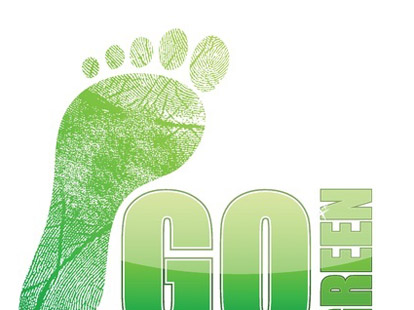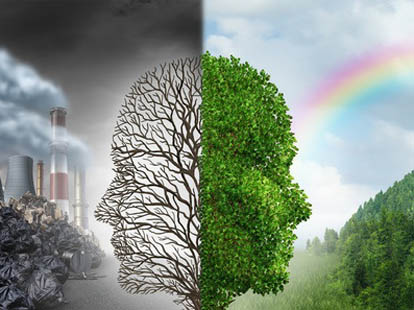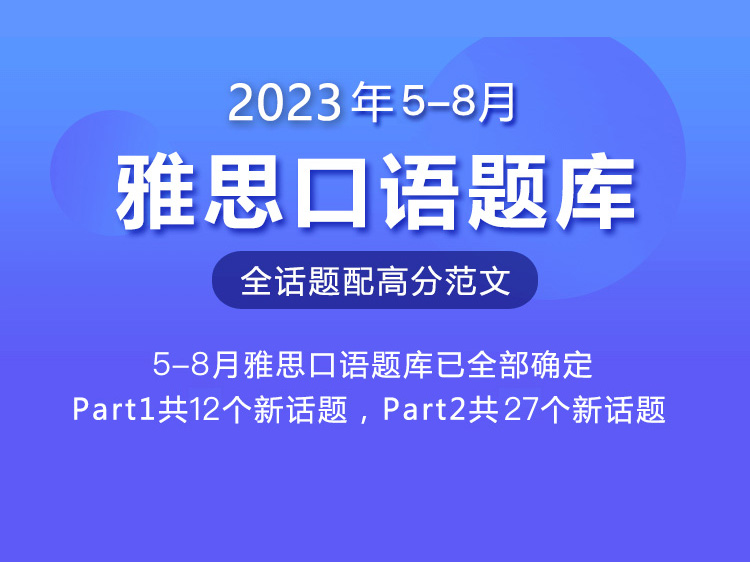【小站独家】雅思阅读全真模考题:淡水危机
- 2016年07月27日14:04 来源:小站教育作者:小站雅思编辑
- 参与(2) 阅读(30706)
小站独家,最新雅思阅读全真模拟试题。一切患有雅思阅读刷题强迫症的烤鸭,请看这里。小站精心整理了一批雅思阅读模拟试题。如果你的剑桥雅思阅读已是烂熟于心,那么这一系列的模拟题真的很适合你,搭配上绝对原创的讲解,还有全文的中文翻译,这等阅读大餐,还等什么!
Crisis! Fresh Water
You should spend about 20 minutes on Question 1-13 which are based on Reading Passage below.
|
A |
As in New Delhi and Phoenix, policymakers worldwide wield great power over how water resources are managed. Wise use of such power will become increasingly important as the years go by because the world's demand for freshwater is currently overtaking its ready supply in many places, and this situation shows no sign of abating. |
|
B |
That the problem is well-known makes it no less disturbing: today one out of six people, more than a billion, suffer inadequate access to safe freshwater. By 2025, according to data released by the United Nations, the freshwater resources of more than half the countries across the globe will undergo either stress—for example, when people increasingly demand more water than is available or safe for use —or outright shortages. By midcentury as much as three quarters of the earth's population could face scarcities of freshwater. |
|
C |
Scientists expect water scarcity to become more common in large part because the world's population is rising and many people are getting richer (thus expanding demand) and because global climate change is exacerbating aridity and reducing supply in many regions. What is more, many water sources are threatened by faulty waste disposal, releases of industrial pollutants, fertilizer runoff and coastal influxes of saltwater into aquifers as groundwater is depleted. |
|
D |
Because lack of access to water can lead to starvation, disease, political instability and even armed conflict, failure to take action can have broad and grave consequences. Fortunately, to a great extent, the technologies and policy tools required to conserve existing freshwater and to secure more of it are known among which several seem particularly effective. What is needed now is action. Governments and authorities at every level have to formulate and execute concrete plans for implementing the political, economic and technological measures that can ensure water security now and in the coming decades. |
|
E |
The world's water problems requires, as a start, an understanding of how much freshwater each person requires, along with knowledge of the factors that impede supply and increase demand in different parts of the world. Malin Falkenmark of the Stockholm International Water Institute and other experts estimate that, on average, each person on the earth needs a minimum of 1,000 cubic meters (m3) of water .The minimum water each person requires for drinking, hygiene and growing food. The volume is equivalent to two fifths of an Olympic-size swimming pool. |
|
F |
Much of the Americas and northern Eurasia enjoy abundant water supplies. But several regions are beset by greater or lesser degrees of "physical" scarcity —whereby demand exceeds local availability. Other areas, among them Central Africa, parts of the Indian subcontinent and Southeast Asia, contend with "economic" water scarcity, where lack of technical training, bad governments or weak finances limit access even though sufficient supplies are available. |
|
G |
More than half of the precipitation that falls on land is never available for capture or storage because it evaporates from the ground or transpires from plants; this fraction is called green water. The remainder channels into so-called blue-water sources—rivers, lakes, wetlands and aquifers—that people can tap directly. Farm irrigation from these free-flowing bodies is the biggest single human use of freshwater. Cities and industries consume only tiny amounts of total freshwater resources, but the intense local demand they create often drains the surroundings of ready supplies. |
|
H |
Lots of Water, but not always where it is needed one hundred and ten thousand cubic kilometers of precipitation, nearly 10 times the volume of Lake Superior, falls from the sky onto the earth's land surface every year. This huge quantity would be enough to easily fulfill the requirements of everyone on the planet if the water arrived where and when people needed it. But much of it cannot be captured (top), and the rest is distributed unevenly (bottom). Green water (61.1% of total precipitation*): absorbed by soil and plants, then released back into the air; unavailable for withdrawal. Blue water (38.8% of total precipitation*): collected in rivers, lakes, wetlands and groundwater; available for withdrawal before it evaporates or reaches the ocean. These figures may not add up to 100% because of rounding. Only 1.5% is directly used by people. |
|
I |
Waters run away in tremendous wildfires in recent years. The economic actors had all taken their share reasonably enough; they just did not consider the needs of the natural environment, which suffered greatly when its inadequate supply was reduced to critical levels by drought. The members of the Murray-Darling Basin Commission are now frantically trying to extricate themselves from the disastrous results of their misallocation of the total water resource. Given the difficulties of sensibly apportioning the water supply within a single nation, imagine the complexities of doing so for international river basins such as that of the Jordan River, which borders on Lebanon, Syria, Israel, the Palestinian areas and Jordan, all of which have claims to the shared, but limited, supply in an extremely parched region. The struggle for freshwater has contributed to civil and military disputes in the area. Only continuing negotiations and compromise have kept this tense situation under control. |
Questions 1-5
Do the following statements agree with the information given in Reading Passage 1? In boxes 1-5 on your answer sheet, write
TRUE if the statement is true
FALSE if the statement is false
NOT GIVEN if the information is not given in the passage
1. The prospect for the need for the freshwater worldwide is obscure.
2. To some extent, the challenge for the freshwater is alleviated by the common recognition.
3. Researchers arrive at the water crisis based on persuasive consideration of several factors.
4. The fact that people do not actually cherish the usage of water also contributes to the water scarcity.
5. Controversy can't be avoided for adjacent nations over the water resource.
Questions 6-10
The reading Passage has eleven paragraphs A-I
Which paragraph contains the following information?
Write the correct letter A-I, in boxes 6-10 on your answer sheet
NB you may use any letter more than once
6. the uneven distribution of water around the world
7. other factors regarding nature bothering people who make the policies
8. joint efforts needed to carry out the detailed solutions combined with various aspects
9. no always-in-time match available between the requirements and the actual rainfall
10. the lower limit of the amount of freshwater for a person to survive
Questions 11-13
Summary
Complete the following summary of the paragraphs of Reading Passage, using No More than Three words from the Reading Passage for each answer. Write your answers in boxes 11-13 on your answer sheet.
Many severe problems like starvation and military actions etc. result from the shortage of water which sometimes for some areas seems 11 because of unavailability but other regions suffer other kind of scarcity for insufficient support. 12 of the rainfall can't be achieved because of evaporation. Some other parts form the 13 which can be used immediately. Water to irrigate the farmland takes a considerable amount along with the use for cities and industries and the extended need from the people involved.
篇章结构:
|
体裁: |
论说文 |
|
主题: |
淡水资源紧缺 |
|
结构: |
A段:提出问题,点明淡水资源供小于求的情况 |
|
B段:数据预测未来缺水情形 |
|
|
C段:导致缺水预期普遍化的几个因素 |
|
|
D段:保护水资源需要采取的行动 |
|
|
E段:了解水资源问题1首先要了解个人淡水需求量 |
|
|
F段:了解水资源问题2其次要了解世界不同地方阻碍淡水供应因素(如:物理缺水,经济缺水等,即缺水类型) |
|
|
G段:了解水资源问题3 可利用降水量少,本地需求大 |
|
|
H段: 3 降水量时空分布不均,可利用降水占比少 |
|
|
I段:合理分配水资源的困难 |
试题解析:
Questions 1-5:
l 题目类型:True/False/Not Given题型——是非题
|
题号 |
答案 |
定位词 |
文中对应点 |
题目解析 |
|
1 |
F |
need for freshwater |
A段最后一句 demand for freshwater
|
1,选项:未来对水的需求预期不清楚 F 2,是非题往往存在顺序性,本题在原文中对应比较靠前 3,根据题目中的关键词定位到原文A段最后一句 4,精读:原文中说目前很多地方对淡水的需求量超过供应量,并且这种情况没有显示出减弱的迹象。 5,困惑点预判:虽然前半句currently说的是目前,和题目题目中prospect貌似不符,但是后半句有提到没有减弱迹象。所以未来对淡水需求依旧庞大。 |
|
2 |
F |
common recognition |
B段第一句 That the problem is well-known |
1,选项:从某种程度上来说,对水资源短缺的共识弱化了它所带来的挑战 F 2,B 段第一句表明,尽管这个问题众所周知,但它还是令人不安。 3,关键:否定词no less |
|
3 |
T |
Researchers arrive at |
C段第一句 Scientists expect…because..and because…what’s more |
1,选项:研究人员基于对几种因素的深刻考虑得出了关于水危机的明确结论 T 2,C段第一句讲到Scientists expect water scarcity to become more common in large part 对应题目中的specific conclusion;based on对应because;several factors对应because…and because..what’s more 3,tips:注意表并列的关联词 |
|
4 |
Not Given |
Water scarcity |
C段第一句 Scientists expect water scarcity to become |
1,选项:人们不珍惜水资源同样导致了水资源短缺 Not Given 2,C段中给出了导致water scarcity的几种原因,1,getting richer 2,global climate change 3,faulty waste disposal 4,industrial pollutants 5,fertilizer runoff 6,saltwater water into aquifer 并没有提到人们不珍惜用水 |
|
5 |
T |
Adjacent nations |
I段第四句 …which borders on…all of which have claims to the shared |
1,选项:邻国之间就水危机的争论难以避免 T 2,I段第三句说Given the difficulties…within a single nation...imagine the complexities…for international river basins such as…这句话中Given表让步,单个国家已经够难了,可见国际间的会更难,后面的例子又说几个相邻的国家(which have claims to the shared…)之间存在struggle for freshwater 以及only等词都在强调解决争端的不易
|
Questions 6-10:
l 题目类型:Matching题型——从属关系搭配题
Questions 11-13:
l 题目类型:Summary题型——摘要填空题
参考译文:淡水资源紧缺
|
A |
在新德里和凤凰城,世界各地的决策者使出浑身解数致力于如何管理水资源。明智地使用这种权力将变得越来越重要,因为随着岁月的流逝,世界上的淡水需求目前在许多地方都是需求超过供给,并且这种情况没有显示出减弱的迹象。 |
|
B |
尽管这个问题是众所周知的,但它同样令人不安:今天,每6个人中就有1个人,也就是说有超过一亿的人,遭受无法获得足够的安全淡水的问题。根据联合国公布的数据,到2025年,全球范围内超过一半的国家的淡水资源将会要么面对压力,例如,越来越多的人所需要的水比可安全使用的水要多,要么就是该国家安全的淡水资源直接短缺。到本世纪中叶,地球多达四分之三的人口能面临淡水稀缺。 |
|
C |
科学家们对水资源短缺的预期变得越来越普遍,在很大程度上是因为世界人口正在上升,很多人都越来越富裕(从而扩大需求),因为全球气候变化加剧了干旱和减少了水资源的供应。此外,因为故障废物处置,工业污染物的释放,化肥的径流和因为地下水的枯竭使得沿海海水涌入到含水层等使得水源受到威胁。 |
|
D |
由于水资源缺乏会导致饥饿,疾病,政治动荡和武装冲突,如果不能采取行动,会产生广泛和严重的后果。幸运的是,在很大程度上,需要保护现有水资源的技术和政策工具是已知的,并且其中几个似乎特别有效。现在需要的是行动。每一级的政府和当局必须制定和执行具体计划来保证政治,经济和技术等确保现在和未来几十年水资源安全的措施的实行。 |
|
E |
全球水资源问题首先需要解决的是了解每个人需要的淡水量以及在世界不同地方阻碍淡水供应和增加淡水需求的因素。斯德哥尔摩国际水资源研究所的Malin Falkenmark等专家估计,平均而言,地球上的每个人至少需要1000立方米的水。每个人所需要的最基本的水包括饮用水,卫生用水和种植粮食用水。这个里相当于一个奥林匹克规模的游泳池所蓄水的五分之二。 |
|
F |
大部分美洲和欧亚大陆北部享受丰宫的水供应。但是,一些地区的“物理”稀 缺性使得需求超过当地可提供的量,使得这些地区或多或少地受到水资源问题的困扰。其他地区,像非洲中部,印度次大陆和东南亚的部分地区,要应对“经济型”缺水,那里缺乏技术培训,政府不力或较弱的财政支持使得即使有足够的供应依然面临水资源短缺的问题。 |
|
G |
超过一半落在上地上的冰雹从来都不可用于捕获成存储,因为它从地面蒸发,或从植物蒸发,这部分被称为绿水。其余的部分进入所谓的蓝水来源,像河流,湖泊,湿地和地下蓄水层,这些是人们可以轻轻松松使用到的水源。这些用于农田灌溉的自由流动的水是单个人使用淡水量中占最大比例的部分。城市和工业本身只消耗少量的淡水资泜,但它们所创造的的巨大的本地需求耗尽了周围可以用的水资源。 |
|
是有大量的水存在,但并不总是当需要110000立方千米的水时,每年有10倍于苏必利尔湖的雨水从填空降落在地球陆地表面。如果在人们需要的时候,雨水可以随时降落以满足人们的需求的话,那么其实整个的蓄水量还是足够大来应付的。但大部分的水不能被捕获(靠近顶端的),其余的是不均匀分布(靠近底部的)。绿水(总降水量的61%*):由土壤和植物吸收,然后重新释放到空气中,无法分离以供人使用。蓝水(总降水量的38.8%*):在河流,湖泊,湿地和地下水可供提取,蒸发之前到达海洋。这些数字加起来可能因为四舍五入不到100%。只有1.5%的水可供人直接使用。 |
|
I |
近年来的大型野火使得水资源大量消失。所有经济行为者已经采取了合理的份额,他们只进没有考虑自然环境的需求,当供应不足时,会因为干旱降低到临界值。墨累—达令流域委员会的成员现在疯狂地试图摆脱他们的分配不当的水资源总量导致的灾难性后果。鉴于理智地分摊在一个单一国家的供水都是非常困难的,可以想象如果在国际河流流域接壤的如黎巴嫩,叙利亚,以色列,巴勒斯坦地区和约旦,约旦河是共享的,但是是有限制的,在这样一个非常炎热的地区分配以满足供应的要求是有多么复杂,在该地区不断有民用和军用关于淡水的纠纷。只有持续不断的谈判和妥协,这一紧张局势才能在控制之下。 |
参考答案:
|
Version 20110 主题 淡水资源紧缺 |
|||||
|
1 |
FALSE |
2 |
FALSE |
3 |
TRUE |
|
4 |
NOT GIVEN |
5 |
TRUE |
6 |
F |
|
7 |
I |
8 |
D |
9 |
H |
|
10 |
E |
11 |
physical |
12 |
capture or shortage |
|
13 |
blue-water |
|
|
|
|












































